Fire hazards
Overloaded plug sockets. Faulty electrical equipment. Heaters covered or left plugged in. All of these hazards aren’t difficult to imagine within the workplace, and the effects can be devastating.
Unlike most other safety concerns, if fire hazards aren’t controlled properly, they have the potential to injure or kill large numbers of people very quickly. Even if harm is avoided, the costs of a serious fire can be significant, and many businesses do not recover.
Get your FREE consultation
Submit your details and one of our team will be in touch.
COVID-19 | FREE expert guidance for employers, including sample policies, template risk assessments and more
How we help
Protect your people and property from fire risk
Fires happen in all industries. In some, where there are large quantities of waste and combustible materials, dust build-up and/or flammable liquids and vapours, the risk is amplified.
Whether you’re a school or a manufacturing facility, under the Regulatory Reform (Fire Safety) Order 2005 and The Fire (Scotland) Act 2005, you must take reasonable steps to reduce the risk from fire and make sure people can escape safely should one occur. If you’re not equipped to manage this risk yourself, WorkNest and our partners can help.
- Ensure your fire safety arrangements are effective and review and remedy potential fire hazards through an on-site health and safety audit (General Risk Assessment)
- Get a more in-depth picture of fire risk with a specific Fire Risk Assessment, provided either by ourselves or our partners depending on your level of risk, should this be required
- Develop internal awareness and competence with RoSPA-approved eLearning training, including fire safety essentials, fire wardens and DSEAR courses
- Access expert-created templates, checklists and forms from our full-version Knowledge Hub available via myWorkNest
- Maintain safety and compliance with unlimited advice and support from a dedicated Health & Safety specialist
Related resources
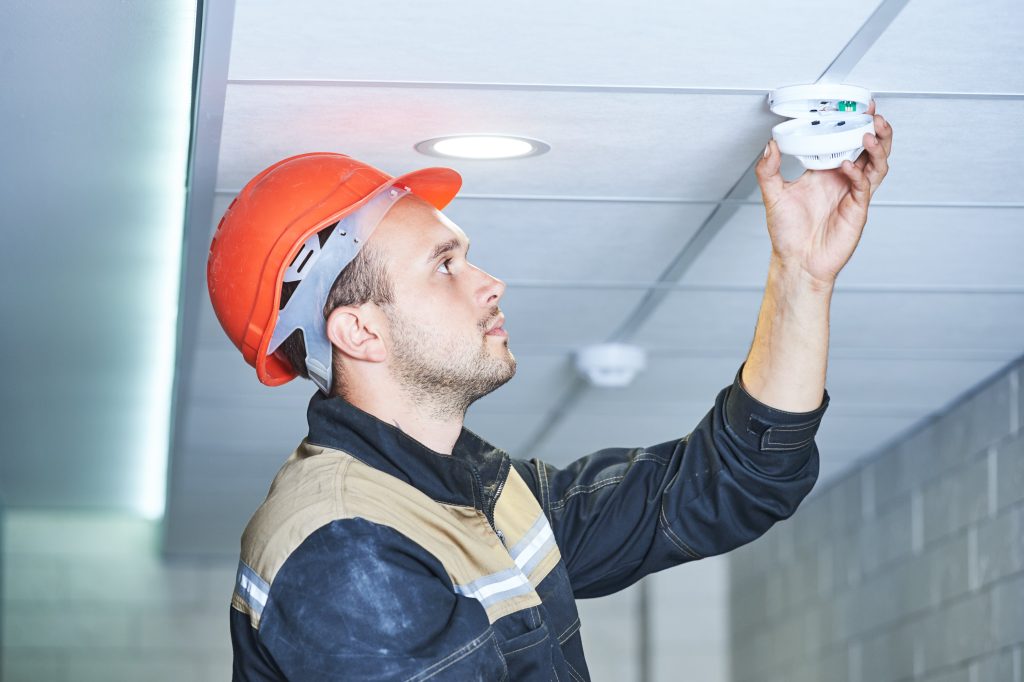
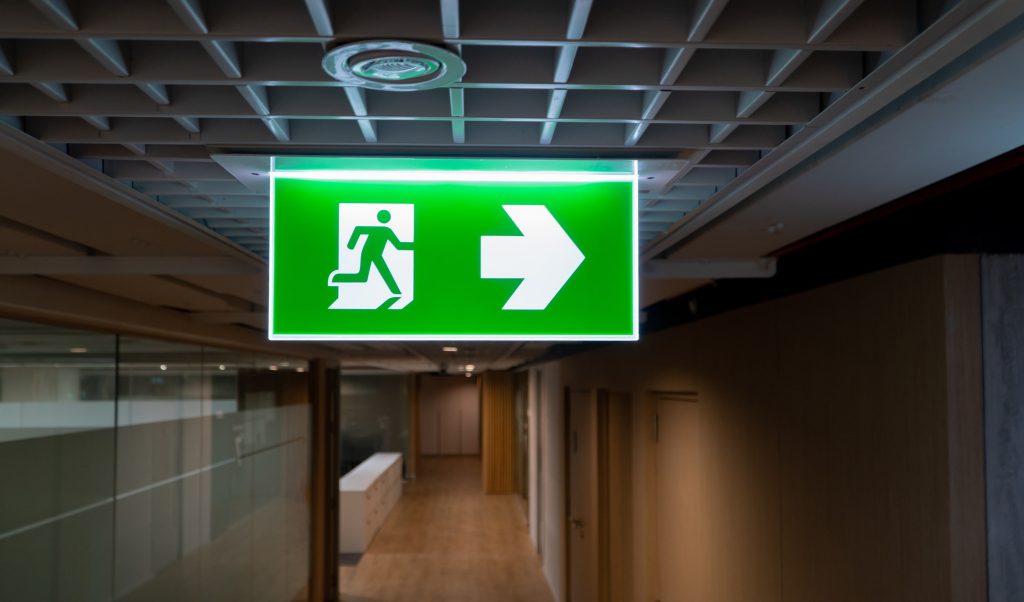
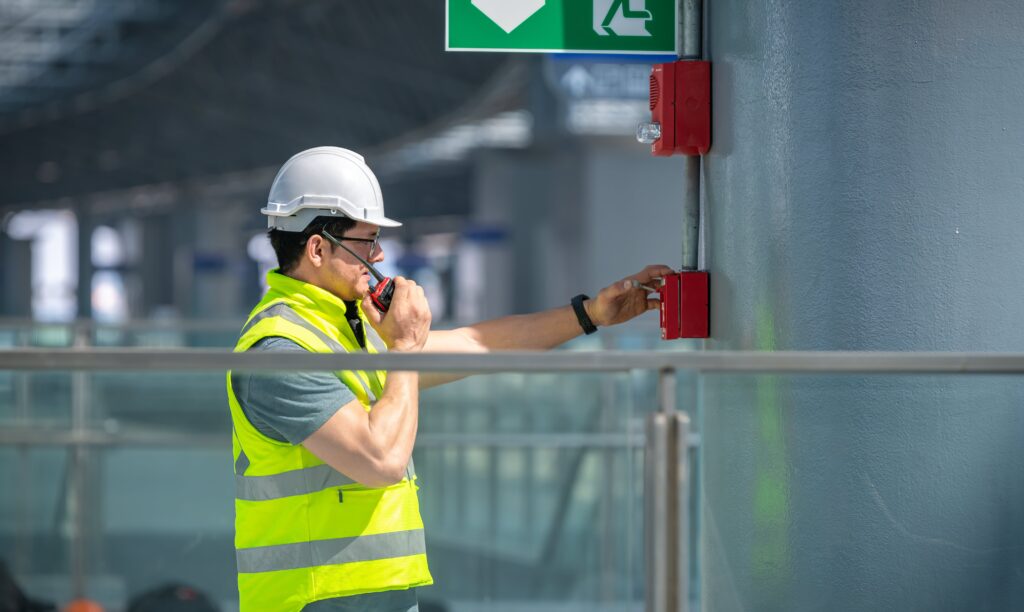
Blog
False Fires | Fire Services in Scotland to Stop Attending Automatic Alarm Call Outs From 1 July
Develop your fire strategy, minimise the potential for harm
All organisations, regardless of size or sector, should have a fire strategy. Do you have an evacuation plan setting out a suitable method for raising the alarm and means of escape? Are your fire management system and fire safety controls monitored for effectiveness? Do staff know what to do in the event of a fire through induction training, regular refreshers and drills?
If the answer to any of these questions is no, your fire prevention strategy and emergency arrangements may fall short of legal requirements and you may be putting your people, business and reputation at risk.
To discuss your specific needs and enquire about the right fire safety support for your business, contact us on 0345 226 8393.
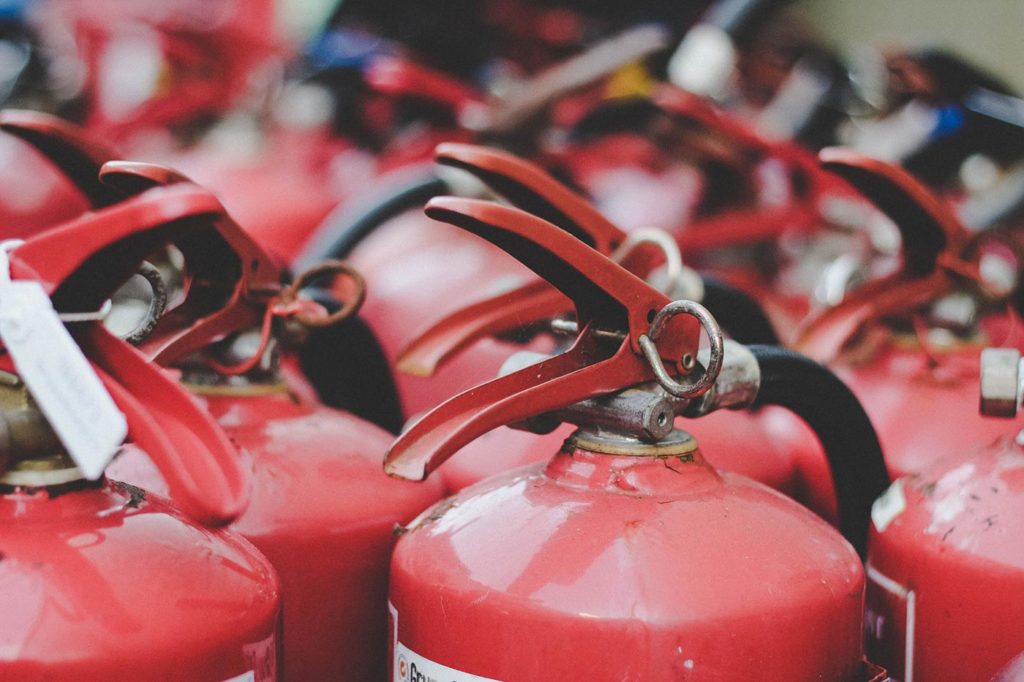
Who is responsible for fire safety awareness in the workplace?
The primary responsibility for fire safety in the workplace lies with the “responsible person”. Under the Regulatory Reform (Fire Safety) Order 2005, this is usually the employer, building owner, landlord, an occupier, or anyone in control of the premises. If there is more than one ‘responsible person’, they must work together to meet this legal responsibility.
A responsible person must take reasonable steps to reduce the risk of fire and ensure that people can escape safety if a fire does occur. This includes:
- carrying out a fire risk assessment
- keeping it up to date
- implementing suitable fire safety measures
- making sure staff receive appropriate training
While certain tasks – like routine checks or fire warden duties – can be delegated, the legal responsibility still sits with the employer. Fire safety isn’t something that can be left to chance. It needs to be actively managed, reviewed regularly, and adapted if the workplace or workforce changes. Not meeting these duties can result in serious consequences such as enforcement action or prosecution, so it’s important to get it right.
How many steps make up a fire safety risk assessment?
A fire safety risk assessment is typically made up of five key steps. This process involves a thorough inspection of the premises to identify potential fire hazards, ensure steps are in place to prevent fires from starting, and confirm that suitable fire protection measures are available to safeguard everyone in the building.
Here’s a step-by-step breakdown of the fire risk assessment process:
1. Identify the hazards
Understanding how fires could start is the foundation of a good risk assessment. A fire hazard can be anything that could start a fire. Look for:
- potential sources of ignition – such as electrical equipment, cigarettes, cooking, housekeeping, contractors or naked flames
- fuel – including paper, chemicals, and waste
- oxygen
2. Identify people at risk – Consider who may be affected if a fire breaks out – employees, contractors, visitors, or vulnerable individuals such as lone workers or those with mobility issues
3. Evaluate, remove, reduce and protect from risk
Once you’ve identified hazards and who may be at risk, the next step is to evaluate how likely it is that a fire could start and what the impact would be. This includes reviewing whether you have the right precautions in place to prevent fires and protect people if one breaks out. Consider the following:
- Are sources of ignition kept safely away from combustible materials?
- Do you have suitable fire detection and alarm systems?
Are there enough escape routes, clearly signed and accessible, even in low light? - Are fire extinguishers and emergency lighting in the right locations?
- Is there a fire safety plan in place, and does everyone know what to do in an emergency?
Taking proactive steps at this stage helps reduce the risk of fire and ensures people can exit the building quickly and safely.
4. Record, plan and train
Keep a record of your findings and actions (required by law if you employ five or more people). Develop an emergency plan, communicate it to staff, and provide appropriate training so everyone knows what to do in the event of a fire.
5. Review and update the fire risk assessment regularly
Fire risks can change over time. Regularly review your assessment – especially after significant changes such as building alterations, staff turnover, or the introduction of new chemicals, equipment or processes.
Popular FAQs
Do I need a Fire Risk Assessment?
The Regulatory Reform 2005 states that it is an absolute requirement for the responsible person to conduct a Fire Risk Assessment. The responsible person is the main duty holder, and WorkNest can assist by completing this for you.
Do I need to have all my portable appliances tested annually?
You must make sure electrical equipment is safe if it can cause damage, but the law does not say how you must do this or how often. Besides regular user checks, the HSE recommends that all portable equipment is visually inspected at initial intervals which could be between six months and four years depending on the type of equipment. The regulator also states that portable equipment that is not double insulated should have a portable appliance test at initial intervals which could be between one and five years depending on the type of equipment.
How do I store flammable chemicals safely?
Flammable chemicals should be stored in secure fire-resistant containers/cabinets when not in use. Consider limiting the quantity on site to further reduce the fire hazard.
How do I monitor the actions arising from my Fire Risk Assessment?
Your WorkNest General Risk Assessment (or Fire Risk Assessment as appropriate) will identify any areas of non-compliance. Afterwards, you will receive an electronic report that includes a prioritised action plan together with practical advice to remedy shortfalls.
Every client gets access to our award-winning Health & Safety Software which can be used to manage all health and safety responsibilities quickly and efficiently. The software includes apps that enable you to manage any actions arising from the General Risk Assessment and Fire Risk Assessment, as well as conduct workplace inspections, develop risk assessments and record and investigate accidents. It also includes a repository for all your health and safety documentation, including your Health & Safety Policy and Handbook.
What's included in our fixed-fee Health & Safety support
Accident and Incident Investigation
An accident in the workplace is every employer’s worst nightmare. We can help to guide your investigation, advise on corrective action and protect your interests in the event of regulatory enforcement.
Can you help us prepare an accident investigation report?
Yes. This can be tricky to get right, especially as once you reach conclusions and set out the actions you have taken, the document is disclosable to the other side in the event of a personal injury claim or prosecution. We’ll help you stick to the facts, keep opinion separate, and make sure the report is presented in a way that protects your best interests and, most importantly, identifies the things that need to be put right to prevent reoccurrence.
We have been written to by the regulator regarding a health and safety incident. Can you help?
Yes. In the event of a serious accident or emergency, we will support your investigation and advise you on your communications with the enforcing authority. We will be there to help mitigate damage, guide you and support you. If you have received a letter from the regulator, we can help you to formulate a response until legal advice is required, in which case (if you have chosen to take it) our Legal Expenses Insurance is activated.
Advice Line
Whether you’re facing an immediate crisis or just in need of an expert second opinion, get sensible, proportionate and practical advice at any time with our unlimited advice line support.
Who will I be advised by?
At WorkNest, we’re big believers in a personal approach. That’s why we assign each of our clients a named consultant, with who will become your main point of contact for advice, guidance and support on all health and safety matters. If you take up our full Health & Safety service, your consultant will also be the one to conduct your health and safety audit and produce your policy and handbook. This means you’ll receive consistent advice from a dedicated expert who truly understands your organisation’s safety system, arrangements and goals.
What if my consultant isn’t available?
If, for whatever reason, your dedicated consultant isn’t available when you call, our office-based Helpdesk Team will be able to resolve most issues for you or direct you to the relevant guidance or template you need via our Knowledge Hub. If you have a particularly urgent or technical query, our Helpdesk Team can triage this to another expert within our team. Rest assured you’ll never be left without support.
Audit and Inspection
From a policy that isn’t being executed properly to a procedure or risk assessment that’s out of date, we can conduct a thorough examination of your premises, practices and procedures to identify and remedy any areas where you’re exposed.
What form does the audit take?
There are a number of different models and templates for conducting health and safety audits. Most commonly, and the approach we adopt at WorkNest, is what’s known as a General Risk Assessment (GRA). This is a systematic examination of your workplace to identify possible causes of harm, the likelihood and severity of that harm occurring given the safeguards already in place, and any further control measures needed to reduce risk to as low a level as is “reasonably practicable”.
Will you just provide a report of the issues identified?
No, we report on both compliant and non-compliant areas, and the report will provide clear solutions and recommendations to address particular areas of concern. Unlike some providers, we won’t insert default ‘corrective action required’ responses unless it is absolutely clear what you need to do; we edit to provide clarity. Plus, if you have any questions or concerns, your dedicated Health & Safety Consultant will be more than happy to assist.
Become Your Competent Persons
We’re so confident in our ability to manage your compliance that we’ll even act as one of your legally-required competent persons, which all organisations must have access to by law in order to meet the requirements of health and safety legislation.
What is a competent person?
Put simply, a competent person helps an organisation to comply with health and safety law and take all reasonable steps to keep people from harm. This will be one or more persons who have the ability to recognise the health and safety risks associated with your organisation and identify sensible and proportionate solutions. The meaning of competent person can be found in Regulation 7 of the Management of Health and Safety at Work Regulations 1999. This states that “every employer shall, subject to paragraphs (6) and (7), appoint one or more competent persons to assist him in undertaking the measures he needs to take to comply with the requirements and prohibitions imposed upon him by or under the relevant statutory provisions and by Part II of the Fire Precautions (Workplace) Regulations 1997.”
Why would I appoint somebody external to my business?
Will the individual you appoint as your in-house competent person be able to dedicate enough time to this responsibility? They might know your organisation inside and out, but do they have the necessary skills, knowledge and training to keep you compliant? Do they have a working understanding of health and safety legislation and how it applies to your organisation? Appointing an impartial person, external to your organisation, gives you access to technical expertise and the benefit of hands-on experience, and brings structure to the way you manage health and safety. We’ll help you to set up an effective safety management system, show you what good looks like, and give you clarity over what you need to be doing.
eLearning
Taking time out for employee training isn’t always possible. Nevertheless, as an employer, you want to know that your staff are fully equipped to undertake their duties confidently and safely – and that your organisation is protected – without affecting productivity or spending a fortune.
A convenient and powerful alternative to classroom-based training, our online eLearning courses incorporate videos and interactive testing for impactful and engaging employee training.
What types of courses are available?
Our ever-growing library of eLearning courses currently covers over 100 topics, including HR courses such as Equality & Diversity, Sexual Harassment and Social Media Use; soft skills courses such as Communication, Leadership and Change Management; and compliance courses such GDPR, Anti-Money Laundering and the Bribery Act. We also offer an extensive range of Health & Safety courses, including Accident Reporting, Risk Assessment and First Aid. Download the full course brochure.
How much do the courses cost?
All of our eLearning courses are free for the first year when you purchase our Employment Law & HR or Health & Safety managed service. This means you’re not paying per head or per course, which not only keeps down but gives you complete cost certainty over your training expenses. This is particularly handy if your workforce is growing, as you won’t need to purchase extra licenses, giving you exceptional value for money.
Legal Expenses Insurance
An optional element of our fixed-fee Health & Safety support, our FCA-regulated Legal Expenses Insurance (LEI) can cover against the commercial ramifications of a serious safety incident.
What happens if there’s an accident in our workplace? Is it likely we will be fined?
Most reportable accidents in the workplace are not followed up by the regulator, but if they do take an interest, you are more likely to be subject to some sort of enforcement action being taken. This may be an enforcement notice or Fee for Intervention (FFI) breach. Alternatively, it may be the start of criminal proceedings that end up in court, the cost of which can be significant.
Does LEI include legal representation?
Yes. If you choose to defend the claim, our LEI includes legal support right the way through a case, including barrister’s costs. Here, there will be a prospect of success assessment; the likelihood of an acquittal will need to be more than 50% in order to be covered by the LEI. However, if you’ve followed advice from your dedicated WorkNest Health & Safety Consultant, there’s no reason why you wouldn’t be covered in this situation. In reality, if we have identified an issue and you’ve taken the corrective action we recommended, you shouldn’t find yourself in this situation in the first place.
SafetyNest Software
Our innovative Health & Safety Management Software will revolutionise your approach to safety management by creating smart “to-do” lists, cutting out the admin and allowing you to monitor your compliance at a glance.
How can SafetyNest help me?
Our SafetyNest software can transform how you manage health and safety. By turning heavily-administrative, time-consuming tasks into automated processes, it will increase standards and efficiencies across your organisation and free up valuable time. By being able to monitor your compliance at a glance, you’re not left in the dark about how you’re performing and can quickly and proactively identify what action is needed, reducing the potential for an incident and giving you peace of mind. It can also be instrumental in demonstrating compliance to the regulator, increasing your chances of a stress-free inspection.
What exactly is a ‘risk status indicator’?
One of the main benefits of our Health & Safety Software is that you can see, at a glance, exactly how you’re performing and what needs to be done to maintain compliance. When you log in, you will immediately see your Current health status, which gives you visibility of all sites and their current RAG status for ‘Audit’, ‘Registry’, ‘Monitoring’ and ‘Risk assessments’, as well as Location monthly health status, which allows you to select a site and see the progression of the RAG status in any given time frame.
Policy and Handbook
Whether you’ve got nothing in place or are in need of an expert review, our Health & Safety specialists can provide you with a policy and handbook tailored to your organisation, processes, activities and environment.
Who will the Health & Safety Policy be written by?
Your WorkNest Health & Safety Policy will be written by an experienced Health & Safety Consultant with recognised qualifications and technical expertise. If you take up our core Health & Safety service, this person will become your dedicated consultant for all health and safety matters – meaning the advice you receive will be consistent and based on a genuine understanding of your business. Plus, for any questions or areas of your policy that require specific technical expertise, as well as support from your named consultant, you’ll be able to rely on a nationwide team of experts with vast and diverse specialisms and experience.
What sections will it include?
Your Health & Safety Policy will be based on the principle of plan, do, check, act. It will include a statement of commitment describing how the business is organised to fulfill its legal responsibilities (refined to reflect post holder titles), followed by an arrangements section covering all risk areas that are relevant to the business and how they will be managed (contractors, fire, first aid, machinery maintenance, lone working, etc.). For each, it will follow a format of “we recognise”, “we will” and “the approach we will take is…”. It will also cover the importance of risk assessment, monitoring and review.
Risk Assessment
Risk assessment is a fundamental element of health and safety management. Get an expert steer on formulating assessments for specific risk areas such as DSE, manual handling, COSHH and fire safety.
Is a risk assessment a legal requirement?
Yes. Under the Management of Health and Safety at Work Regulations 1999, all employers, regardless of size or sector, must undertake a “suitable and sufficient” assessment of the health and safety of risks their employees are exposed to while at work, as well as the risks to any non-employees (customers, visitors, contractors, etc.) who may be affected by their activities. If you employ five or more employees, it is a legal requirement to keep a written record of your assessment and significant findings. If you’re not sure where to begin with risk assessment, we can help you.
We have an in-house health and safety team, but they haven’t had formal risk assessment training.
Risk assessment is the foundation of an effective safety management system, yet many individuals with this responsibility have not been taught the basic principles of how to conduct a risk assessment and what the law expects. This can result in an inaccurate estimation of risk, which may lead to certain control measures being recommended that are not necessary or, worse, control measures not being identified or implemented. If you are keen to make sure this essential task is being done properly, our expert Health & Safety Team can devise a risk assessors training package to develop internal competence.
Why choose us?
Experts in Health & Safety support

If you’re not confident in your current practices, or don’t have professional support in place, our network of qualified Health & Safety Consultants can help you to build a safe and compliant working environment through expert support tailored to your organisation.
- Approved by a Primary Authority
- Dedicated specialists with recognised qualifications
- Genuine hands-on experience of managing risk
- Unlimited 24/7 advice, award-winning software and policy support
- The confidence to act as one of your competent persons

Who you’ll be working with

Toyah Marshall
Principal Employment Law Adviser
Client stories

“
Our relationship with WorkNest is more like a supportive partnership. They treat us like peers, and yet provide extraordinary support whenever we need it. Whether it is about the challenges of working through a pandemic or building a new HR strategy, the people at WorkNest have been kind, holding our hand when that was needed (and it was!) and skilled
experts, providing guidance as we required it. We would not have managed through this last period without them, and I look forward to more of this cooperation ahead.”
“
WorkNest supports our 280 staff members with Employment Law and Health & Safety and has provided quality management training too.”
Lisa Best
Head of Service Delivery, Catalyst Choice
“
We get a great deal of comfort and satisfaction knowing that we have support as and when we need it, in a decisive and responsive way.”
Richard Berry
Group HR Director, Culina Group

“
We moved our legal support to WorkNest (formerly Law at Work) having previously used a time and line law firm. It was important, though, that an all-inclusive fee structure did not come at the expense of quality. Thankfully we’ve been delighted with the service we’ve received from WorkNest.”
Chief Executive
Waverley Care
“
What we recognised in WorkNest is the background that they have. They are able to supply knowledge and experience in a number of disciplines, which enables us to develop our business in a way that’s safe, to do it on time and with a quality to it.”
Debbie Rainbow
Director of Human Resources and Health & Safety,
Bluestone National Park Resort

“
Celia McKeon
Chief Executive, The Joseph Rowntree Charitable Trust (JRCT)
“
As the company started to get larger, we knew we had to protect our employees and our contractors both onsite and in the offices. WorkNest is exactly what we needed to move the company forward.”
Joanne Beaver
Operations Director, Beaverfit

“
Pineapple have worked with the team at WorkNest (formerly Law at Work) since 2003, and we have built a trusted partnership together. We particularly like WorkNest’s concise and practical advice concerning employment law/HR issues and also appreciate their totally supportive approach in all areas of health and safety.”
General Manager
Pineapple Dance Studios
Latest news and insights

COVID fatigue | Keeping staff engaged with your health and safety controls
BLOG Having lived with coronavirus for over a year, it’s understandable that some may have become tired of constant COVID precautions. And with the successful vaccine rollout, marked decline in infection rates and subsequent relaxation of lockdown restrictions, there may be the illusion that it’s ‘business as usual’. However, the coronavirus threat hasn’t gone away. As the Prime Minister said when announcing the roadmap out of lockdown, there is “no credible route to a zero-COVID Britain or a zero-COVID world”.
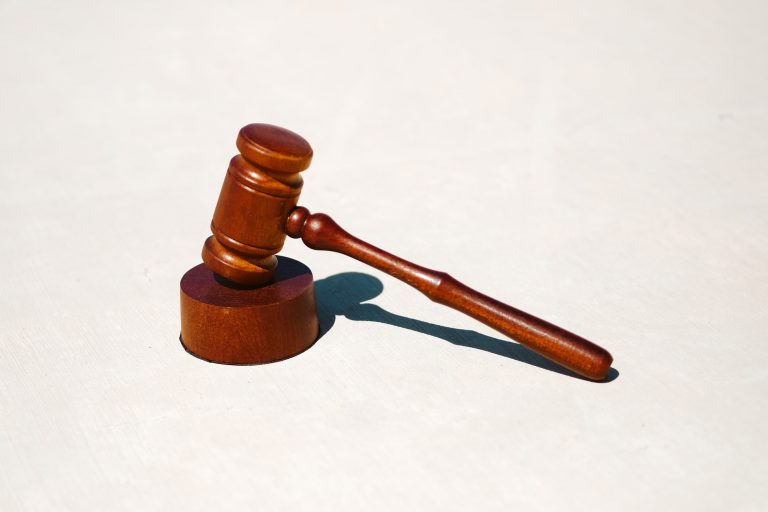
Guilty until proven innocent? | Why health and safety law puts the onus on employers
BLOG We’ve all heard the phrase ‘innocent until proven guilty’. This is the assumption that underpins criminal proceedings in the UK. Under Article 6 (2) of the Human Rights Act 1988, it is the prosecution’s job to prove, beyond reasonable doubt, that the person on trial is guilty of the offence they stand accused of. Whether you’re accused of fraud, assault or burglary, these cases are all subject to the principle of presumed innocence. However, in the health and safety

Get prepared | HSE’s priorities for 2021
BLOG The Health and Safety Executive (HSE) has been at the heart of the government’s response to the COVID-19 outbreak. Over the last year, its priority has been making sure that workplaces are COVID-secure through a nationwide campaign of spot checks and inspections. The HSE’s actions have included: Completing over 165,700 COVID-19 spot checks and responding to over 210,000 concerns. Carrying out some 2,000 workplace checks a day, a number which is said to be constantly rising. Targeted spot checks


















